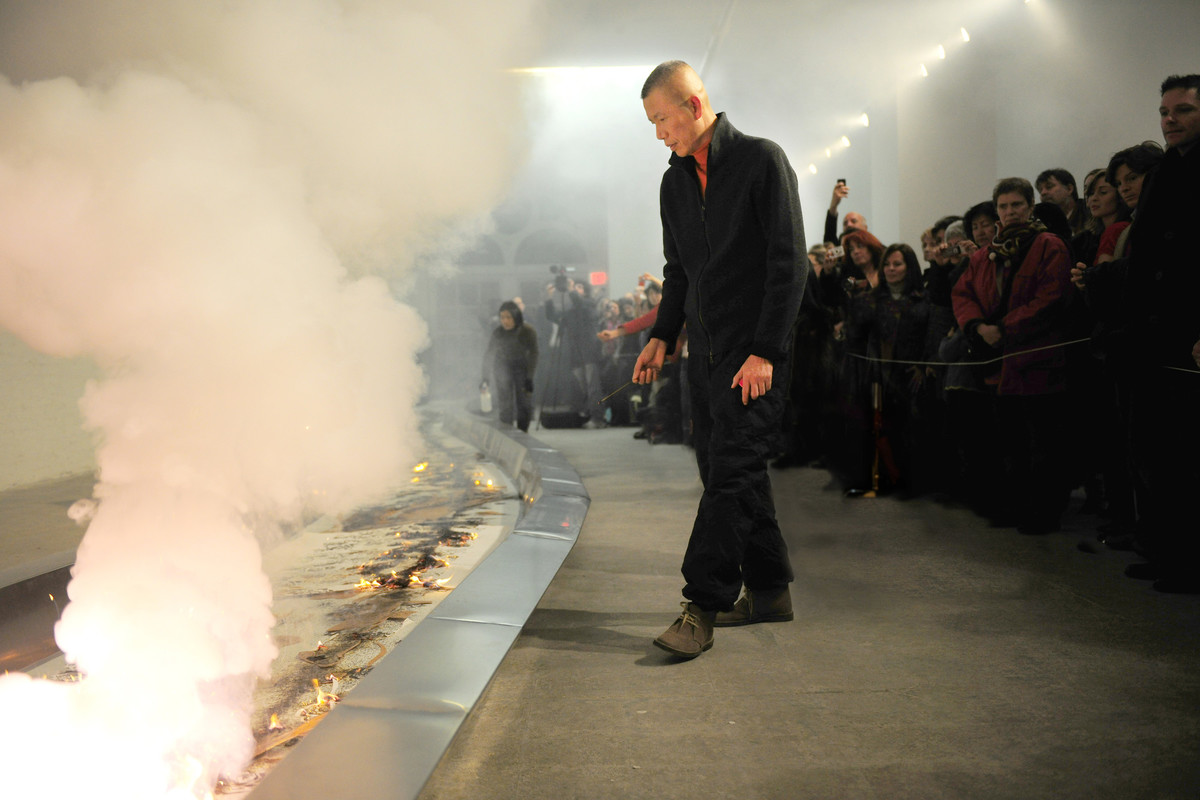Cai Guo-Qiang’s multisite project in Philadelphia was conceived to honor Marion Boulton Stroud and Anne d’Harnoncourt. In the work titled Time Scroll, he interpreted the story of their friendship in a drawing on a forty-meter long piece of silk charmeuse. At FWM, Cai ignited this drawing with gunpowder to create scorched imprints along the surface. The fabric was then laid inside a fabricated metal riverbed filled with flowing water. Gradually, the drawing faded, becoming more and more indistinguishable over time.
A second work, Fallen Blossoms: Explosion Project, took place at sunset on December 11, 2009, on the facade of the Philadelphia Museum of Art. The momentary explosion traced the form of a blossoming flower, starting with its delicate inner petals and radiating outward, before vanishing in smoke. At FWM, high-definition footage of this cycle of bloom and decay was played back at a significantly slower rate.
Five artisan weavers from the ethnic Tujia clan in the Xiangxi region of Hunan Province, China, were invited to work in residence at FWM. To create the piece, titled Time Flies Like A Weaving Shuttle, each artist wove on a traditional loom transported from China and installed within FWM’s gallery, using yarn naturally dyed with plants native to Hunan Province. Before the weavers’ arrival, Cai invited Stroud to record her memories of d’Harnoncourt; this served as the soundtrack heard throughout the exhibition. The weavers had never previously traveled outside of their homeland or met Stroud and d’Harnoncourt. However, each chose one translated text to weave into a tapestry. Using their traditional storytelling method of weaving, the weavers relied on their impression of the friendship to recount its history. As naturally happens when stories are transferred from one individual to another or translated to a new medium, memories can change, and yet persist, long after the weavers’ shuttles have paused.


